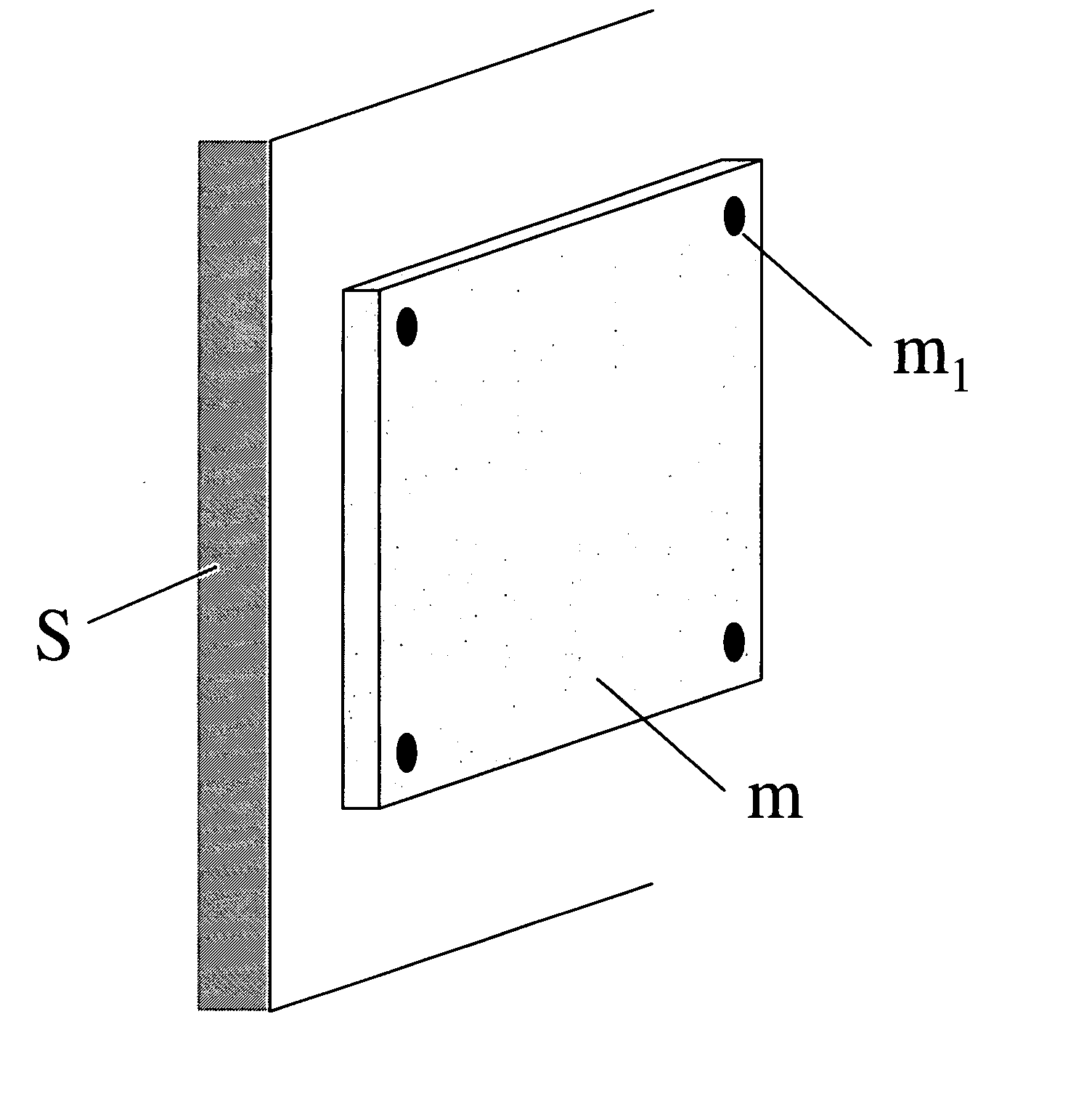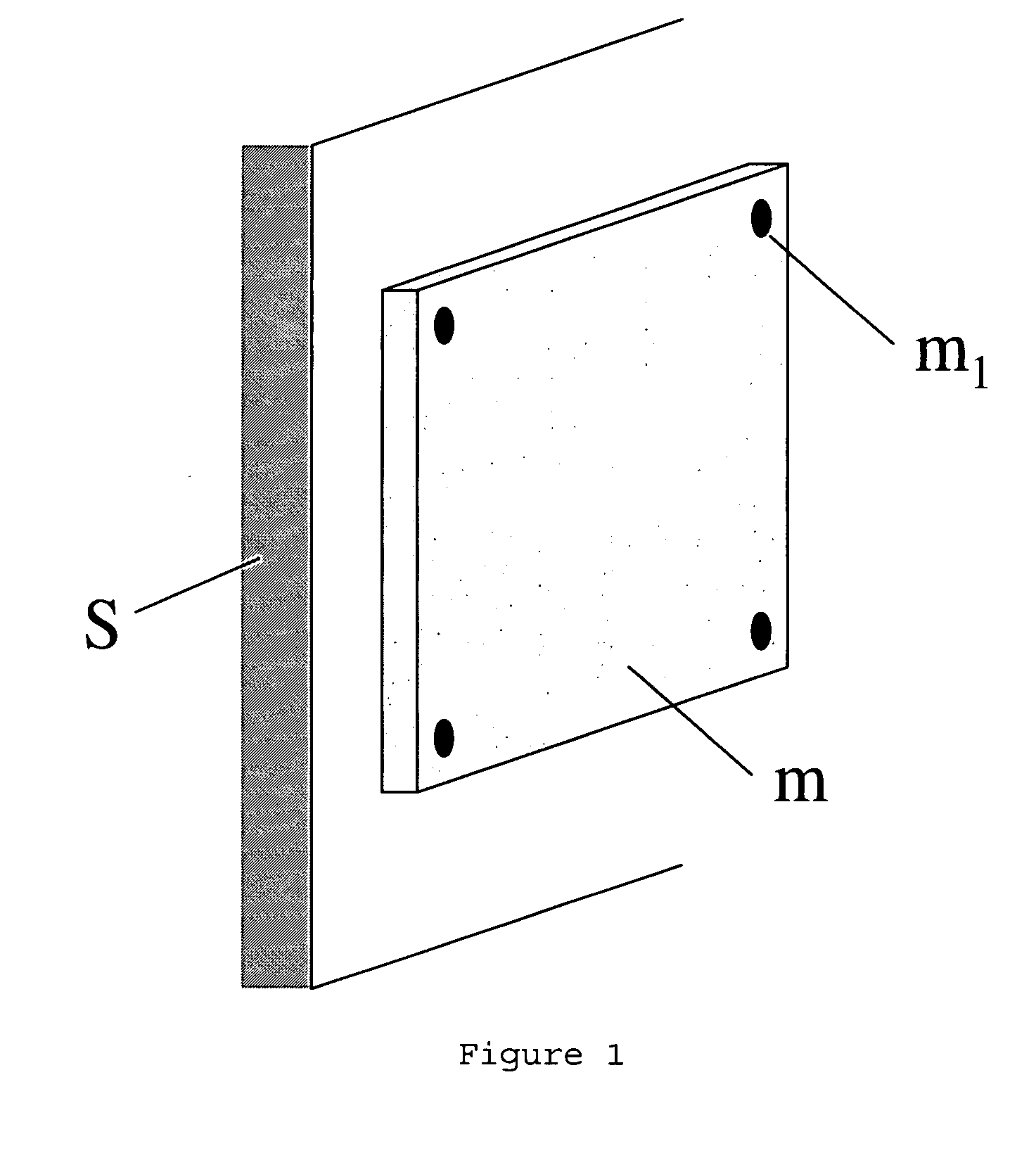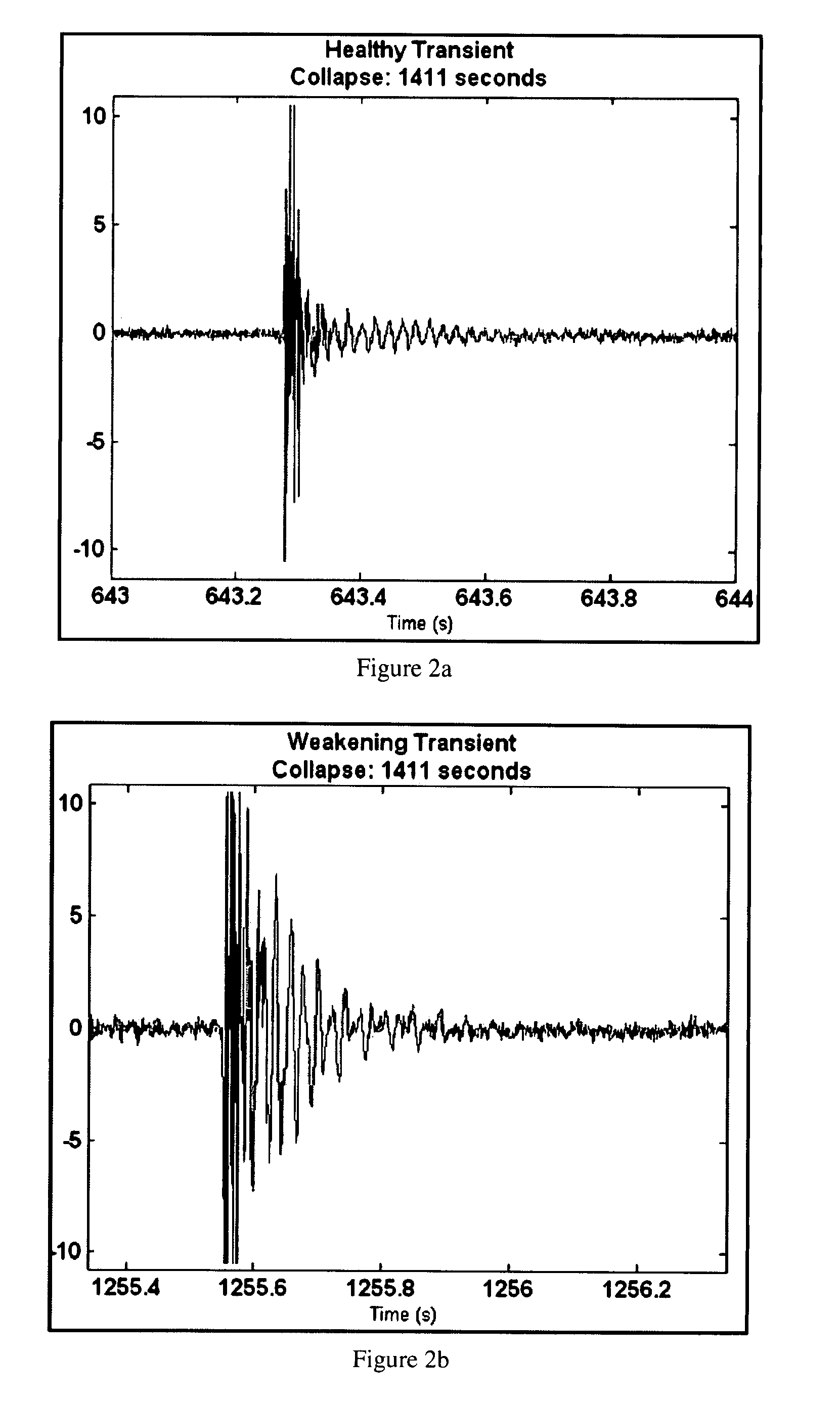System and method for determining and detecting stability loss in structures
- Summary
- Abstract
- Description
- Claims
- Application Information
AI Technical Summary
Benefits of technology
Problems solved by technology
Method used
Image
Examples
example 1
[0078] Adobe Audition, a commercially available audio editing software package, was used to de-noise the test burn data to produce cleaner spectrograms and more prominent trends in frequency. This tool is traditionally used to remove the ambient noise recorded by a microphone. The user selects a portion of the audio track containing only undesired noise. Adobe Audition then creates a Noise Reduction Profile from the selected region, which records the spectral power of the noise in this region using the FFT. The entire audio track is then analyzed spectrally in blocks of 12,000 samples and the noisy frequencies (according to the created profile) are attenuated. Noise reduction always results in a decrease in RMS since frequency bands are only attenuated and not amplified.
[0079] Two different methods of applying the Noise Reduction Tool have been developed to emphasize meaningful frequency content. The first method increases the contrast between structural vibrations and ambient nois...
example 2
[0090] A number of simple frames were constructed for the purpose of evaluating the performance of stability indicators in the field and to collect meaningful failure events. Eleven simple frames were built at the Los Angeles County Fire Training Facility in Pomona, Calif., with burn tests conducted during June and July of 2006. Of the eleven total frames, the first five frames consisted of two vertical columns and a single cross beam (header), two were two-story frames, and the final four burns were individual collapse events from a single-story space frame. All the frame types are shown in FIGS. 12a through 12c. Each frame was designed to produce a single, dominant collapse event involving the fracture of the cross beam, without major damage done to the vertical columns. To induce this collapse event, the center of each cross beam was pre-loaded at center span with 350 lbs. Fire was applied through the use of a flame impingement device (not shown).
example 3
[0091] To obtain repeatable results, the construction of the frames had to be as close to identical as possible. Two sets of frames were able to be built next to each other, as seen in FIG. 13a. Posts were sunk into holes two feet deep and reinforced with poured concrete to stabilize the base of the frame. The posts were carefully measured and leveled as they were installed, as shown in FIG. 13b. Failure of the beams was projected to occur at a single mid-span collapse of the beam where the load was applied. As a result, the connections between the horizontal beam and support columns were designed to prevent a failure scenario in which the joint connection fails due to tensile stress as the cross beam weakens. Each of the joints in the frames had bookshelf supports, corner braces and hurricane strapping, shown in FIGS. 14a and 14b, in order to transmit vibrations to the support columns and to encourage failure in the cross beam rather than in the joint. Accelerometers, as taught in ...
PUM
 Login to View More
Login to View More Abstract
Description
Claims
Application Information
 Login to View More
Login to View More - R&D
- Intellectual Property
- Life Sciences
- Materials
- Tech Scout
- Unparalleled Data Quality
- Higher Quality Content
- 60% Fewer Hallucinations
Browse by: Latest US Patents, China's latest patents, Technical Efficacy Thesaurus, Application Domain, Technology Topic, Popular Technical Reports.
© 2025 PatSnap. All rights reserved.Legal|Privacy policy|Modern Slavery Act Transparency Statement|Sitemap|About US| Contact US: help@patsnap.com



